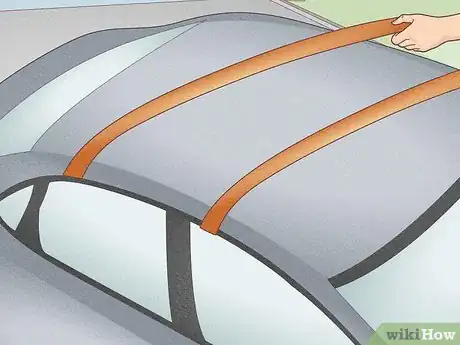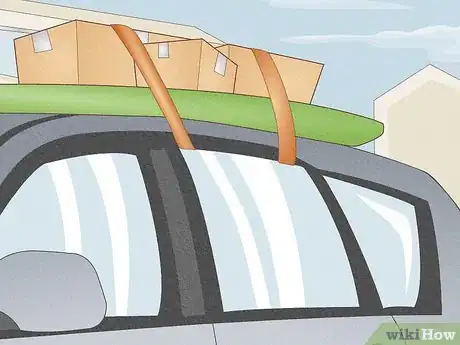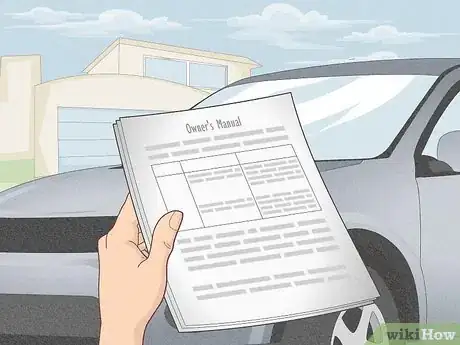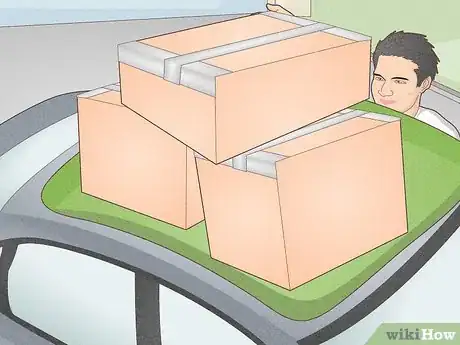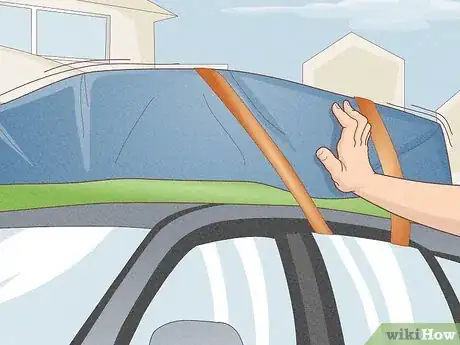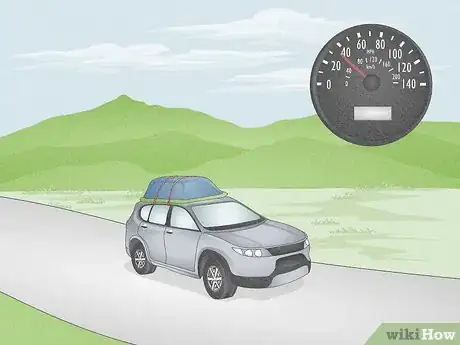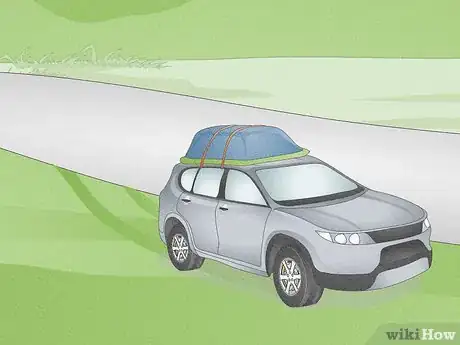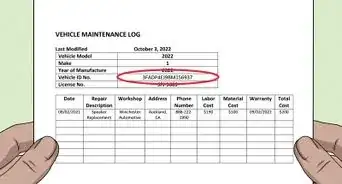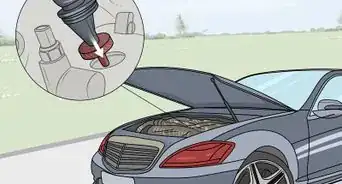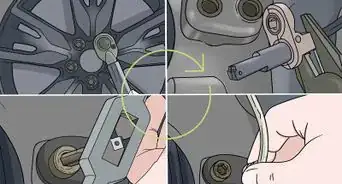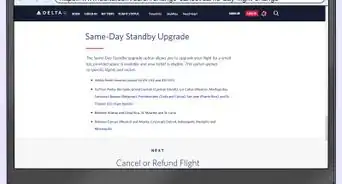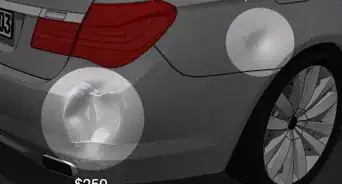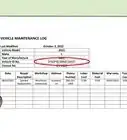This article was co-authored by Jason Phillip and by wikiHow staff writer, Hunter Rising. Jason Phillip is a handyman specializing in mounting and hanging objects onto walls. With over five years of experience professionally mounting and installing objects through his company, Jason's Handyman Services, Jason's work includes working with mounting window AC units, designing art gallery walls, installing kitchen cabinets, and replacing light fixtures on drywall, brick, and plaster. He has been rated a "Top Pro" every year since 2016 by Thumbtack for being one of the highest-rated, most popular professionals on Thumbtack.
There are 13 references cited in this article, which can be found at the bottom of the page.
This article has been viewed 32,021 times.
It can be a little frustrating when you don’t have the space in your vehicle for all of your bags. Luckily, you can haul your luggage with the extra space you have on your roof. As long as you secure your things properly, you can take them on any long drive! We’ll walk you through all the different options you can use on your roof and how to make sure you and your things stay safe while you’re on the road.
Steps
Choosing a Storage Option
-
1Loop straps through your vehicle doors for a cheap but less secure alternative. Tying your things directly to your vehicle can help you save money if you’re in a hurry. You can use ratchet straps for the most security or rope with a trucker’s hitch knot. Open your car doors and feed the strap through a driver’s-side door and out the passenger-side door. Loop the strap over the luggage at least 2 or 3 times length- and width-wise before tying it down.[1]
- Ratchet straps usually cost around $20 USD and you can buy them from most hardware stores.
- Putting your luggage directly on your vehicle could scratch or dent it, so place a towel or blanket down first. Your luggage will also be exposed to the elements and potential thieves.
- Avoid using bungee cords to hold your luggage in place since it’s the least secure.
-
2Raise your luggage off the roof with a rack or basket. Roof racks and baskets prevent you from scratching or denting your vehicle if your luggage moves around. The most secure racks and baskets install directly on roof rails or cross bars, but you may be able to find some that attach or clip into your door jamb. You can get a variety of sizes, but look for one that’s made to fit the make and model of your vehicle. You’ll also need ratchet straps in addition to your rack to tie your items down.[2]
- Roof racks tend to cost around $50–75 USD, but higher-end models can be pricier. Ratchet straps are available at most hardware stores and only cost $20 USD.
- Roof racks and baskets still leave your luggage exposed to weather. They could also attract potential thieves since your items will be out in the open.
- You can also cover your roof rack with a cargo net to keep your things in place so they’re less likely to move around or fall off.[3]
Advertisement -
3Choose a cargo bag to keep your luggage dry. Cargo bags have a soft outer shell that zips over your cargo so it doesn’t get damaged with the weather. You can clip cargo bags directly to your vehicle in the door jambs or you can tie them onto rails or rack on your roof.[4]
- Cargo bags typically cost around $50–100 USD.
- Most cargo bags also come with a lock so you can protect your belongings.
- Items may shift around in a cargo bag, but it may contain straps inside to help you secure your items down.
-
4Pick a hard-shell cargo box for the most secure protection. Cargo boxes have a sturdier plastic design that you can lock closed so your items stay dry and safe even if they’re unattended. Since your luggage isn’t visible, you’re less likely to deal with any thieves. Most cargo boxes have to attach to a roof rack or rails with crossbars, so you may need some additional hardware and installation.[5]
- Cargo boxes are the most expensive and usually cost anywhere from $300–500 USD, but they may get pricier for larger models.
- Cargo boxes are also the heaviest, so you may not be able to carry as much on your roof.
Loading Your Luggage
-
1Check your vehicle’s load weight limit so you don’t exceed it. You can find the load limit for your vehicle in the owner’s manual or by searching your make and model online. The load limit determines how much weight you can safely carry without it affecting your driving. If you go over the load limit, it could affect the balance of your vehicle and make it unsafe to travel.[6]
- Many vehicles have a load limit around 100 pounds (45 kg) but it varies.
-
2Layer heavier luggage on top of lighter items to keep them in place. Lighter items are more likely to fly off of your vehicle when you’re driving at top speed. Distribute the lightest items evenly across your roof and then set your heavier bags on top to weigh them down.[7]
- Even if you have lighter soft duffel bags and heavier suitcases, always start with your lighter luggage so you don’t risk losing anything.
-
3Distribute the weight evenly across your roof. If you put all your heavier items on one side, it will affect how well your vehicle controls. Spread the weight out across the roof of your vehicle so it stays balanced. If you only have one large bag, then put it in the center of your roof for the best performance.[8]
-
4Lie your luggage on its side for better aerodynamics. When you put things on your roof, the wind resistance impacts your vehicle’s efficiency. Rather than standing your luggage up, lay it down as flat as you can against the roof. If you need to stack your items, store the bulkier items near the back of your vehicle instead of near the front.[9]
- Avoid letting anything hang over the sides of your vehicle since it’s illegal in most areas. It’s okay if things extend off the front or back as long as it doesn’t affect your visibility.
-
5Give the load a strong shake before you leave to check that it’s secure. Grab the side of your items and give them a good shake or push. If you see anything moving around, tie it down or reposition it so you don’t risk losing it while you drive. Make sure that every strap feels secure and taut when you’re about to head out.[10]
- Remember that you’ll probably be driving at highway speeds so if shaking your things makes them move around, then it will easily bounce around during the trip.
Driving with Your Luggage
-
1Drive slower so you don’t risk losing your items. Since you have some added weight on your vehicle, it can be a little harder to turn and stay in control. Try to stay at or slightly under the speed limit wherever you’re driving. If you come to a rough road, slow down even more to ensure your luggage doesn’t bounce around or fall off.[11]
- Take turns cautiously since taking a sharp turn with heavy items on your roof could put your vehicle off-balance.
- It’s illegal in most areas to have something fall off your car while you’re driving. You could end up with a fine or even jail time.
-
2Give yourself more stopping time if you have a full load. The extra weight of your items makes it take longer for you to stop. Plus, coming to sudden stops could make items fall off the front or back of your vehicle if they come loose. Leave an additional car length between you and other vehicles and watch out for any hazards coming up on the road so you can stay safe.[12]
-
3Stop and check if your luggage is secure every 15–30 minutes. After you go at your top travel speed for a little while, pull off of the road and check your straps and ties. Make sure everything still feels tight and that nothing shifted around during the trip. If everything looks okay, you’re fine to keep going. However, if something did move or feels loose, secure it again tightly.[13]
- Account for the extra travel time so you can check on your luggage frequently.
Warnings
- It’s illegal in most areas for items to fall off your vehicle while you’re driving. Always check the road debris laws for the areas you’re driving through so you know the risk.[15]⧼thumbs_response⧽
References
- ↑ https://youtu.be/1-lCRa_zZaQ?t=280
- ↑ https://www.fatherly.com/gear/how-much-stuff-can-you-load-on-a-car/
- ↑ https://youtu.be/G5mUIUx0XRA?t=55
- ↑ https://bestroofbox.com/beginners-guides/car-cargo-carriers-how-to-choose/
- ↑ https://www.forbes.com/wheels/accessories/best-rooftop-cargo-carriers/
- ↑ https://youtu.be/4lz28_meD60?t=67
- ↑ https://go.carolinas.aaa.com/expert-advice/secure-your-load-before-hitting-the-road-45050/
- ↑ https://go.carolinas.aaa.com/expert-advice/secure-your-load-before-hitting-the-road-45050/
- ↑ https://knowhow.napaonline.com/how-to-secure-items-on-a-roof-rack-the-cargo-basics/
- ↑ https://www.ots.ca.gov/2018/06/05/secure-your-load-ots-press-release/
- ↑ https://www.gearpatrol.com/cars/a264635/gtl-how-to-safely-secure-cargo-to-the-roof-of-your-car/
- ↑ https://go.carolinas.aaa.com/expert-advice/secure-your-load-before-hitting-the-road-45050/
- ↑ https://youtu.be/msVtCOUbUi0?t=138
- ↑ https://www.consumerreports.org/fuel-economy-efficiency/how-rooftop-carriers-affect-fuel-economy/
- ↑ https://www.fatherly.com/gear/how-much-stuff-can-you-load-on-a-car/
